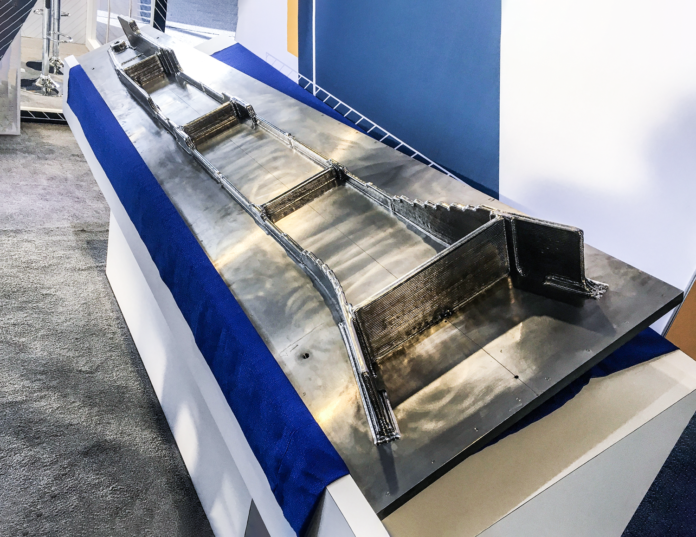Imagine a component that measures 8 feet (2.5 meters) and processed from approximately 100 pounds (45 kg) of titanium. This is exactly the type of additive manufacturing production I would like to see by myself and that’s exactly what contract manufacturer GKN Aerospace and multinational aerospace and defense technology company Northrop Grumman have achieved.
Using laser metal deposition with wire (LMD-w), which successfully doubled the scale of previous components produced, this achievement – as per the words of Shawn Black, President of GKN Aerospace Defense Business, “advances GKN Aerospace’s research into laser metal deposition, expanding on the material science and process development for aerostructure and engine components”.
For those who do not know, Laser Metal-wire Deposition is an additive manufacturing technique for solid freeform fabrication of fully dense metal structures. The process is based on robotized laser welding and wire filler material, and the structures are built up layer by layer.
Demonstrations like this are vital to enabling full industrialization of the LMD-w process for aerostructure components which feature complex geometry found in titanium aerostructure designs.
The team produced this part at GKN Aerospace’s AM Centre of Excellence located at the U.S. Department of Energy’s Manufacturing Demonstration Facility (MDF) at Oak Ridge National Laboratory (ORNL).
The LMD-w cell at Oak Ridge was opened in 2019; it is the second in the US and is said to be the world’s largest pilot production cell of its kind, and focuses on research and development of large scale structural aircraft components. We might expect the opening of another AM cell by the end of this year, as GKN Aerospace is continuously exploring the capabilities of AM.
“This collaborative milestone demonstrated cutting-edge manufacturing methods to build large aircraft components,” said Francisco Flores, vice president, production operations, Northrop Grumman Aeronautics Systems. “Additive manufacturing technologies, combined with digital transformation and analysis capabilities are enabling novel approaches to design and advanced manufacturing processes.”
Future applications of AM for large-scale aerostructures will include: product development, low-rate initial production and the transition of technology development into production solutions. GKN Aerospace already has additive manufacturing components flying on major platforms across civil, military, and space markets.
Remember, you can post job opportunities in the AM Industry on 3D ADEPT Media free of charge or look for a job via our job board. Make sure to follow us on our social networks and subscribe to our weekly newsletter : Facebook, Twitter, LinkedIn & Instagram ! If you want to be featured in the next issue of our digital magazine or if you hear a story that needs to be heard, make sure to send it to contact@3dadept.com






